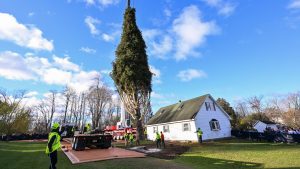Canadian wildfires worsen air quality in Upper Midwest

Smoke from Canadian wildfires has worsened the air quality across the Upper Midwest, affecting states such as Minnesota, Illinois, Wisconsin, Indiana, Ohio and the Dakotas. Northern Minnesota faces hazardous conditions, with officials warning that smoke levels could become “unhealthy for everyone.” Air quality alerts for sensitive groups, including children, older adults, pregnant individuals and people with heart or lung conditions, are expected to remain in effect through Monday evening, June 2.
Officials are urging residents to limit outdoor activities and avoid exposure to unsafe air, particularly those in higher-risk groups. AirNow.gov reports that air quality in the region ranges from moderate to unhealthy, reflecting the widespread impact of the Canadian wildfires.
United States sends aid
On Saturday, U.S. Secretary of Agriculture Brooke L. Rollins announced the U.S. Department of Agriculture (USDA) Forest Service is deploying resources. USDA deployed an airtanker to Alberta. The United States is also mobilizing over 150 firefighters and support personnel to assist with the Canadian wildfire response. In addition, the United States is mobilizing other equipment including sprinkler kits, pumps, and hoses.
What is the situation like in Canada?
In Canada, thousands of residents have been forced to flee their homes. Evacuations have surpassed 17,000, and two deaths have been reported. The provinces of Saskatchewan and Manitoba have declared states of emergency for the next month and requested international assistance to combat the fires. Military aircraft and helicopters are evacuating residents in Manitoba, according to the BBC.
Prime Minister Mark Carney has convened an emergency response group to address the crisis. The Canadian government has pledged to support relief efforts by matching donations to the Canadian Red Cross, deploying military resources and coordinating aid for affected communities.
The Canadian Interagency Forest Fire Centre classified conditions in Saskatchewan and Manitoba as extreme. Sixteen active fires are burning in Saskatchewan, with seven listed as not contained. Manitoba is battling 22 fires. Officials said about 1.7 million acres have burned across the two provinces.
How do these fires compare to previous years?
Canada’s wildfire season typically runs from May to September. Manitoba has already recorded 102 fires this year, surpassing the province’s average of 77 by this time. Dry conditions and strong winds have further intensified the situation.
The ongoing fires follow Canada’s worst wildfire season on record in 2023. That year, 7,100 fires burned 37 million acres, eight firefighters were killed, and no civilian deaths were reported, according to Canadian government data.
Efforts to control this year’s fires have already led to injuries, including a Parks Canada firefighter who was critically hurt on Sunday, May 25. Authorities said firefighters from across Canada are working to contain the blazes, but the challenges remain severe.
The Canadian government’s emergency response and international appeals emphasize the scale of the disaster. With lives and ecosystems at risk, officials are urging continued cooperation and vigilance as the wildfire season progresses.





